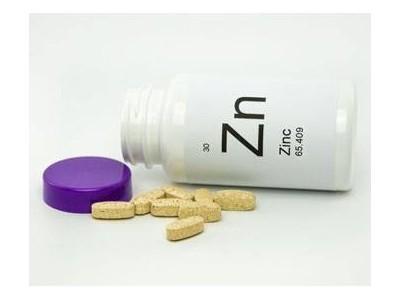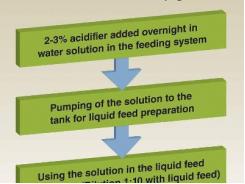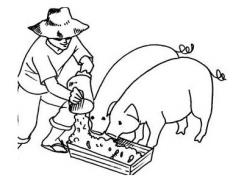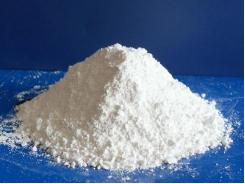Piglets need no more than 25 ppm zinc for optimal growth

Ilkajb | Dreamstime.com | For piglets, 25 mg/kg zinc from inorganic sources can be used a safe minimum target for most commercial purposes.
Study shows growth performance did not differ for pigs supplemented with zinc
Zinc is the trace element widely known from the diarrhea control properties of zinc oxide. But, this nutrient is involved in many biological functions with a role in growth via protein synthesis and antioxidant defense. This makes zinc as a nutrient a key element for maximum growth and health.
In a recent study, 500 pigs weaned at 18 days of age were fed diets containing 0, 25, 50, 75, or 100 mg/kg (ppm) of zinc supplied as organic or inorganic zinc, or 50 mg zinc/kg combination with 50 percent zinc from each source. Pigs were killed at 0, 10, and 35 days of the study to determine mineral tissue concentrations and antioxidant activity in the liver and the amount of metallothionein (MT) protein in the liver, duodenum and jejunum.
The first interesting result was that growth performance did not differ for the pigs supplemented with zinc (25 mg/kg and over) but was greater than those fed the basal diet with no added zinc (P ≤ 0.05). So, it appears, for growth purposes, 25 mg/kg zinc from organic or inorganic sources appears to be adequate. In fact, with actual requirement having been identified at 15 mg/kg in previous studies, the extra 10 mg/kg are most likely the anti-nutritional effect of phytate that binds natural zinc. Nevertheless, 25 mg/kg is far less than typical levels used in the industry (50-100 mg/kg).
In terms of health measurements, hepatic zinc concentration was numerically maximized with 75 mg/kg of organic zinc and with 100 mg/kg of inorganic zinc. Other parameters responded more or less to a same effect towards the benefit of organic zinc, as expected. Based on these data, the authors believe zinc requirements for health and well-being have changed since the data used to establish the 2012 Nutrient Requirements of Swine (NRC, 2012) were published.
Nevertheless, these health benefits failed to materialize in any tangible effect, and as such 25 mg/kg zinc from inorganic sources can be used a safe minimum target for most commercial purposes.
Ioannis Mavromichalis, Ph.D., is Nutrition Editor for WATTAgNet and Editor-in-Chief of Pig International.
Related news
Tools

Phối trộn thức ăn chăn nuôi

Pha dung dịch thủy canh

Định mức cho tôm ăn

Phối trộn phân bón NPK

Xác định tỷ lệ tôm sống

Chuyển đổi đơn vị phân bón

Xác định công suất sục khí

Chuyển đổi đơn vị tôm

Tính diện tích nhà kính

Tính thể tích ao




 Growth in Russian pig meat trade
Growth in Russian pig meat trade  Zinc oxide buffers organic acids in piglet feeds
Zinc oxide buffers organic acids in piglet feeds